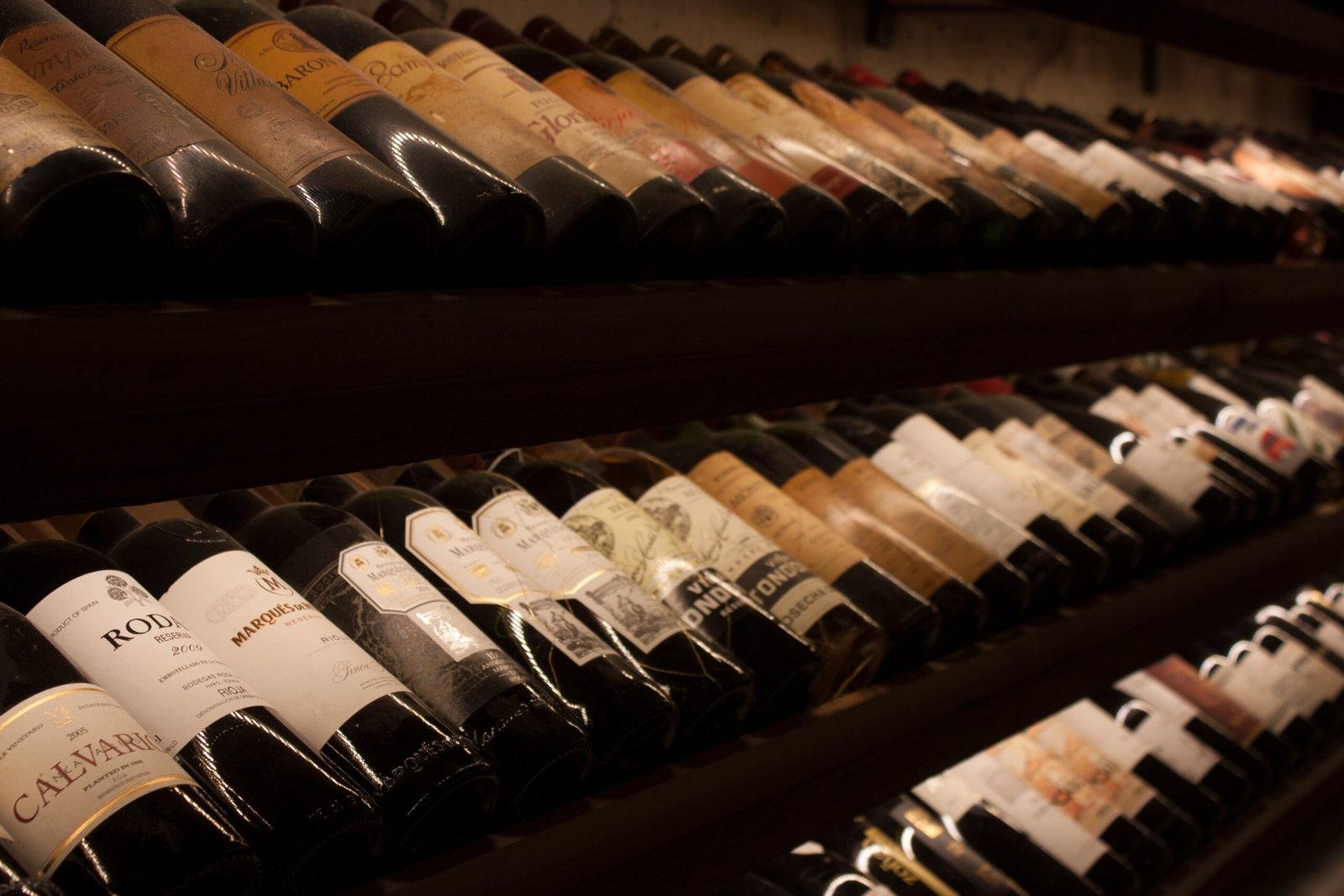Looking to convert your closet—or any other small spaces in your house—into a wine cellar?
You’ve come to the right place.
In this article, we will share the practical and easy ways to turn your closet into a beautiful wine cellar in a comprehensive guide.
What many people don’t realize is that the smaller the space, the more challenging it will be to build a wine cellar on it.
There are many components required to build a custom wine cellar that is both aesthetically pleasing and fully functional. If you don’t know where to start, fitting them into a small space will easily turn into a disaster.
This is where this guide comes in, and you can use our past experience—and numerous mistakes—to avoid the common challenges and successfully convert your small space into the beautiful wine room of your dreams.
Without further ado, let us begin.
Identifying your requirements
First things first, what makes a good wine cellar?
While every wine cellar is unique with its unique requirements, all wine cellars should be:
- Dark. The more light the wine is exposed to, the faster it will mature. Thus, a good wine cellar should be adequately dark without any direct light, especially direct UV light.
- Stable in temperature and humidity. The ideal wine storage temperature is 12 – 15 °C, and for humidity, it’s 55 – 75%. Install air conditioner and insulation as needed.
- Well ventilated. The cellar must be well-ventilated to avoid any lingering odor contaminating the wine bottles. However, ventilation shouldn’t cause inconsistencies in temperature and humidity and shouldn’t be achieved via windows that may result in direct light. A mechanical, controlled ventilation system is recommended.
- Safe from vibrations and noises. While it’s still the subject of ongoing debates, some theories will say that vibrations may negatively affect the wine’s maturing process. Better be safe than sorry later and make sure the
A very common misconception is to think that it’s easier to make a closet—or any small room—properly insulated and airtight, while that isn’t always the case. No matter how small the closet is, keeping it at 12-15 degrees is a challenge, and you’ll need to also take the other factors (i.e., light exposure and ventilation) into account.
Capacity requirements
When it comes to capacity requirements, you’ll need to consider the available square footage, location, and the number of bottles you’d want to store.
You may already have a pretty good idea of how many bottles you’ll purchase in a yer and how fast you’ll consume these bottles.
For example, if you’d like to buy around 7-8 cases of wine every year, and the batch will be consumed within the year, then you’ll need to prepare storage space for slightly under 100 bottles.
Controlling temperature
There are generally four elements to consider when planning temperature control for your wine cellar: cooling/air conditioning unit, vapor barrier, insulation, and doors.
The thing is, accommodating these four elements into a small closet can be easier said than done, and naturally, you’ll need to make compromises.
To accommodate the smaller space, it might be tempting to skip insulation altogether, but we’d recommend against this practice unless it’s absolutely impossible for your space and/or budget to include insulation.
Instead, the main option you should try is to use thinner insulation so you can free up more space. You can choose a high-quality thin insulation with good material (which is more expensive) to compromise for the thickness, or you may also opt to complement it with a more powerful air conditioning unit. Another option is to use insulation that can also act as a vapor barrier, which may help you in saving more space.
Selecting the right air conditioning unit for a small room can also be a challenge. Beyond calculating the required heat load, you will also need to consider the placement of the unit, controllers, and supply/return air grillers. Whether there’s an adjacent room (or not) may significantly affect your decisions.
Regardless, be prepared to spend more time, money, and resources to plan a well-designed wine cellar that factors in the small space, wine display, and refrigeration.
Considerations coolers/refrigerators
In converting your closet into a wine cellar, you basically have two options: whether to invest in a wine cooling system (cooler, refrigerator, etc.), or to rely on passive cooling by maximizing insulation and vapor barriers together with a standard air conditioner unit.
So, how can you identify which option you should take? A good option is to calculate the R-value and the components you are going to use in the space.
R-value, in a nutshell, is the measure of the thermal resistance of a material, the ability of a material to resist heat (and preserve cold air.) The higher the R-value, the better a material’s ability to keep the wine cellar cool.
When purchasing your insulation materials, the R-value should be listed on the package, and typically those with the higher R-values are more expensive. Obviously, the existing wall, concrete, ceiling, and door will also have their R-values.
There are four basic elements of a wine cellar you’ll need to calculate the R-value of doors, floor, walls, and ceiling.
As a general rule of thumb, in order to be able to rely on passive cooling to keep your temperature between 12 – 15 °C — the ideal temperature for preserving wine—you’ll need a 20-25 R-value for your walls and doors, and at least 30 R-value for your ceiling and floor.
If you can’t achieve these numbers with your existing materials+added insulation, then you’ll need to invest in a cooler or refrigerator.
As a side note, if you do decide to use coolers or refrigerators, make sure your doors are properly insulated. This practice alone can help you save on energy costs significantly.
Considerations surrounding humidifiers
As discussed, the optimal humidity of a wine cellar should be around 55 – 75%.
If there isn’t enough humidity in the cellar, wine corks may dry out and may contaminate the wine’s taste. On the other hand, if the humidity level is too high, it may cause the cork to mold, which may also negatively affect the wine’s taste and aroma.
When converting a small space like a closet into a wine cellar, it’s typically easier to control humidity, and in most cases, a single, self-regulating humidifier will do.
Considerations surrounding vapor barriers
In addition to proper insulation and a cooling system (if needed), you’ll need vapor barriers in your walls to prevent condensation.
Because the cellar will be cooler than the adjacent room or rooms, condensation can build up, and this is where the vapor barrier should be installed on the warm side of the wall to protect the drywall.
If condensation builds up and moisture penetrates the drywall, it can result in mold growing in the cellar, which can create an unpleasant odor that will contaminate your wine collection.
Considerations surrounding lighting
As discussed, the most important thing to consider regarding lighting is to make sure there won’t be any direct UV light exposure to the wine bottles.
However, in smaller wine cellars, including closet-sized cellars, heat generated by the lighting bulbs can pose an issue. In general, LEDs emit less heat than other types of bulbs, so they are better for helping you regulate the cellar’s temperature. Not to mention, LEDs are also more cost-effective in the long run.
Take the surrounding space into account
Another common challenge when converting a closet—or any small space—into a wine cellar is that it’s often located in unconventional and/or asymmetrical spaces. For example, a closet under the stairs may have an uneven ceiling, and you may need a special approach for its insulation.
Also, mind the space’s surroundings. Bursts of heat from s nearby stove may cause unstable temperatures, and vibrations from nearby washing machines or furnaces may also affect your wine’s aging process. Even vibrations from heavy foot traffic may affect the wine’s quality over the long term, so it’s best to
It’s important to choose a location that is already stable—or at least—easy enough to control. Alternatively, you may need to invest in a more expensive racking system that can help keep your wine collection stable.
Make the most of the available space
Although understandably, you’d want your wine cellar to be aesthetically pleasing, you should never compromise the room’s function to preserve wine and maintain its quality.
Meaning, plan your design carefully, but when it comes to deciding between function and form, you’ll need to be adaptable.
In a smaller space, you may need to be even more adaptable. The smaller space may make it more challenging to install a bigger air conditioner or a temperature/humidity sensor, so you may need to be creative.
It would significantly help you to find a contractor who already has experience with smaller cellars or wine displays. Their experience may help them in bringing up creative ideas on how to approach your design or how to place key components when needed.
Accommodating the mechanicals
With the smaller closet-sized space, it can be more challenging to accommodate the optimal placement of the mechanicals.
In most cases, through-the-wall (TTW) solutions are the most ideal fit for closet-sized cellars, but sometimes there isn’t enough space to fit these TTW solutions, and a common scenario is when there’s not enough space for the rear of the TTW unit to vent exhaust air. Keep in mind that you’ll also need the TTW unit to be able to accurately read the temperature of the room, so sticking the unit facing a wall to save space (or near the floor) is out of the question.
In such situations, another option is to house the mechanicals outside the wine cellar by using ducts. However, keep in mind that when using ducted systems, you’ll need enough space within the cellar to accommodate supply and return grilles (keep in mind they must be adequately separated from each other to prevent short cycling of the air.)
In short, with the limited space, you may need to be more creative in planning the placement of your mechanicals.
Getting the right wine racks
Now that you’ve designed the space and prepared the insulation and other elements, it’s time to get the right wine racks for your closet-converted cellar.
Wine racks come in various sizes and shapes and from a wide variety of brands. You can also get custom-made racks, which may be a good idea for fitting a smaller closet-sized space. While bespoke wine racks may be more expensive, bespoke fitting may help you in maximizing your available space while taking into account where the mechanicals will go.
When choosing your racks, make sure to take into account the number of bottles you’d like to store at any given time. Also, keep in mind that while most wine bottles are around 3 inches in diameter and 12 inches tall, there are special-sized bottles with varying dimensions.
Last but not least, if there are potential vibrations in the cellar’s surroundings (i.e., from appliances or foot traffic,) consider getting a racking system that can help your collection be more stable.
Wrapping Up
Again, while there is no right or wrong way to convert your closet or any space into a wine cellar, in this article, we’ve shared the tips and tricks you can use to maximize your closet space to build the wine cellar of your dreams.
In dealing with a smaller space, it can be tricky to find the right balance between aesthetics and functionality, but by following the tips above, you can start with a functional cellar design that allows you to stock your cellar based on how you plan to enjoy your collection.
Looking to build bespoke wine cellars, racks, or wine rooms for your collection? Contact Leessa or make an appointment to visit our London showroom right away.



